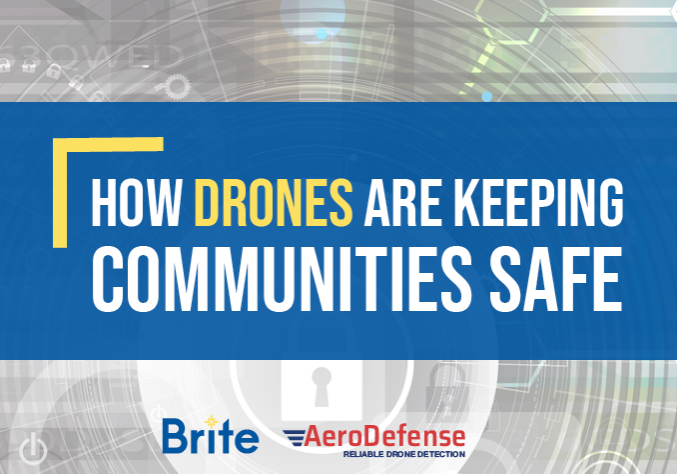How drones are keeping communities safe
March 27, 2019
Imagine dispatch getting a call about an active crime/incident and within two minutes command has eyes on the scene – but there is no officer there. Instead a drone is circling the scene from 200 ft. in the sky.
The military has been leveraging un-manned aerial vehicles (now commonly known as drones) since the WW1 to enter an area without endangering lives. In the decades since the first world war, drone technology has drastically evolved, and public safety agencies can now adapt the technology to create a drone program to enhance efforts.
A major differentiating factor in effectiveness and diversity of applications for drone programs is determined by the software utilized. Brite’s latest Intel Center partner, Cape created a drone software platform, Cape Aerial Telepresence which provides public safety officials with the ability to pilot and control the drone from a command center in real time. No more sending an officer to the scene and waiting for set-up, immediately dispatch a drone for a live stream of events. The pilot simply controls the vehicle with either an iPad or computer and internet.
Four ways drones can transform your department and help keep communities safe –
- Departments can deploy drones as the first responder to incidents within two minutes. Drones do not have to deal with traffic or obstacles in the air, as a car would on the road. Arriving on-scene first allows for command to assess the situation and begin gathering intel prior to feet being on the ground. If the incident requires immediate attention or escalates, additional resources can be deployed quicker.
- After officers arrive on-scene, the live-stream of the call allows those at command to gather further information from command center tools and relay it to those on-scene. During intense situations, the combination of communication and intel will help ensure proper response to a situation.
- Similar to being the first responder, drones have the ability to quickly track and follow targets. One example is if a suspect flees a scene, the drone can follow their movements and communicate that to officers on location. Machine learning isn’t just for virtual assistants like Alexa but can be used for drone operation. Using previous drone data, an algorithm can be created to automate certain features. For example, machine learning can be used to “teach” a drone to follow a car or utilize thermal maps to survey a location.
- Additionally, video is a valuable evidence asset. Store and archive all videos and photos in a management system to later use. Replay videos to further investigate and understand the event, or use it as a learning tool for future calls.
Capitalize on the powerful combination of technology and software to gain live-stream of incident response. Ready to learn more about Cape? Watch our on-demand webinar here. Or contact Brite to launch your departments drone program today.

